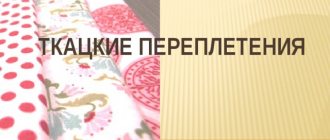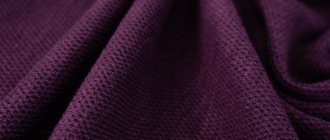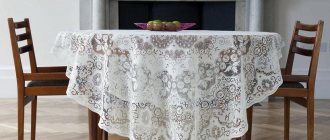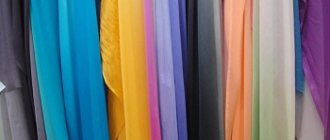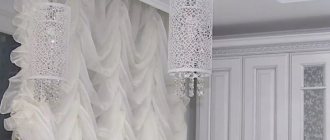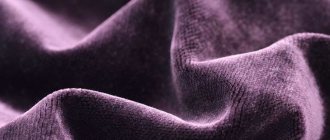Lace is an amazing creation of the world of textiles, performing one single task - to decorate: clothes, linen, interiors...
By sewing an openwork collar or cuffs to your favorite blouse, you can give it a new fashionable life . The lace trim of a formal dress will turn it into a festive outfit. Lace is an integral part of luxurious women's underwear. A cute scarf with airy patterns will emphasize femininity, and an exquisite shawl will add charm to your look.
For wedding and evening dresses, lace is a must-have. And it's not just dresses. Openwork gloves are a cute wedding accessory and a necessary part of the dress code at formal receptions. A lace cape can be draped over your shoulders on a cool evening.
Lace panels, curtains, tablecloths, and pillow covers were very popular in the twentieth century. Today you rarely see lace in interiors.
Lace inserts decorate bed linen, table napkins, lamps and even cup holders are decorated with lace.
The history of lace is as intricate as lace patterns.
INTERESTING!
Despite the fact that lace is often associated with France, Italy is considered its birthplace.
It all started in the 15th century with a simple “reticella” (mesh). Over time, the patterns became more complex. Simple geometric designs began to replace complex floral motifs and even ornamental compositions.
The art of lace making was raised to unprecedented heights by the craftswomen of Flanders .
But we must thank France for the incredible popularity that lace has received. Lace fabrics, despite their high cost, were purchased in incredible quantities. Openwork fabric decorated the clothes of not only women, but also men.
What is lace
Most people are used to seeing lace in clothes, but in fact, this textile is used much more widely. It can be made from various raw materials, both natural and mixed or even synthetic. Depending on various additives, as well as the production method, lace fabric can be incredibly popular stretch guipure, jersey, cotton or polyester fabrics.
And yet, in order to better understand what lace is, it is necessary to delve into the history of the material.
A little historical background
It is very difficult to answer the question of when exactly lace fabric appeared. And all because there are an infinite number of varieties of such paintings. In Rus', since the 13th century, the art of weaving openwork fabrics with bobbins has been widespread and in demand. In fact, it is this variety that can confidently be called our original, folk one. In those days, almost every girl knew how to create stunning, light canvases on her own. This amazing art was taught from childhood, and the fabrics created by the craftsmen were considered a real treasure.
The described lace came to Europe much later - in the 16th century. Then it acquired new features. European craftswomen began to weave multi-colored threads into beautiful patterns, which only added originality and originality to the canvases. In the 18th century, such lace weaving gained immense popularity in the world. As you know, it was then that Peter the Great “cut a window to Europe,” which served as an impetus for the development of a certain fashion in clothing. At that time, French designs became especially popular, which was reflected in the outfits of Russian secular society.
Today, bobbin lace motifs are so diverse that they are usually divided by locality: Ryazan, Vologda, Novgorod, Moscow, etc. The technique, theme, and complexity of the patterns differ. However, manual rather than machine work is still highly valued. Over time, the technique became more complex. The so-called cord lace appeared. Its distinctive feature: the initial openwork pattern is additionally embroidered with a special thread, which gives relief and adds fabulousness. The results are truly magical fabrics!
In addition, when talking about the varieties of lace, one cannot fail to mention such techniques as macrame, tatting, hardanger, ribbon and needle methods for creating unique fabrics. They all differ in appearance, but produce the same impression: beauty that captures the imagination.
Each variety was born in its own country, and therefore is distinguished by pronounced folk motifs, elements, and ornaments. For example, there is stunning Irish, Norwegian, English lace and others. We can confidently say: almost every country has its own solutions in creating exquisite woven or knitted openwork fabrics.
Description of fabric
Since there are so many varieties of lace, it is impossible to describe each one. However, all openwork fabrics have a striking distinctive feature: a filigree pattern consisting of repeating elements. Moreover, the fabric is not complete, but in decorative holes, which are formed thanks to special methods of weaving threads (ribbons, yarn).
Such openwork textile materials are harmoniously combined with various types of fabrics. For example, thick velvet and the finest lace look very impressive, giving it elegance and airiness.
Machine lace making
Almost all lace that is sold in stores is industrially made.
Lace weaving remained a handicraft for many years. A special machine appeared at the beginning of the 19th century in England. Its mechanisms repeated the movement of the lacemaker's hands. Later, John Livers combined the jacquard and lace looms, creating the famous Livers loom, which imitates hand-weaving threads.
INTERESTING
Livers' machines are still in operation. They produce famous French lace. They use natural (cotton, wool, silk) and synthetic materials.
The operation of livery machines is based on punched cards. The pattern is recorded with a special code. Thousands of punched cards are required to produce complex designs.
Origin of lace
There is some disagreement about which country, Italy or Flanders
(an area on the border of modern Belgium and France), embroidered lace was first made. But experts are unanimous in time - the technique of weaving lace using reels (bobbins) appeared in the 15th century.
Although there is an assumption that lace was invented by the ancient Romans.
Decorative decorations were created by drawing threads woven into fabric
, this created holes that were secured with embroidery.
When was the technique of making lace using a needle and bobbins
, there were some deviations in the mechanics of the process: instead of transferring a piece from a dense fabric, open patterns were created by weaving threads over the design, so the fabric had no back side.
Handmade lace
Lace of various densities, reliefs, structures
- Wicker
- Using bobbins
- Sewn
- Needle
- Hardanger
- Knitted
- Knitting needles
- Crochet
- Nodular
- Macrame
- Tatting
- With picture overlay
Crochet lace
Short hook
Can be knitted in different directions and in the round
- Regular (German)
- Sirloin
- Bruges
- Irish
- Guipure
- Reticella
- On the fork
- On paper, glass
Long hook
For single-sided knitting. Reminds me of a knitting needle.
- Tunisian
- Afghan
- Victorian
Handmade lace
What is the famous Vologda lace? It is an expressive floral pattern in the form of flowers, scallops and fans. It is made of dense thread and is often colored.
Many people compare Bruges weaving with Vologda weaving. It is made by crocheting from thick wool or mohair thread.
St. Michael's lace is the result of linen needlework finished with colored floss. The design consists of scallops, teeth, and fan motifs. Used to decorate tablecloths, towels, curtains.
Fork weaving is done with a crochet hook and an auxiliary fork or pin. Openwork works are obtained in a fantasy style.
Classification by technique
Whooping cough
Traditional lace. The openwork fabric is created using bobbins - special spools on which the thread is wound.
Macrame
Handmade knotted lace. Created without the use of tools.
Hardanger
Counted openwork embroidery. The name comes from a Norwegian fjord.
Tatting
Shuttle woven knotted lace.
INTERESTING
In the East, tatting lace was called “mauk” - a shuttle used to weave fishing nets.
Needle
Created with needles and threads. A design is applied to the fabric, the outline is embroidered with thick thread, then filled with a pattern of various stitches.
Chantilly
A type of French bobbin lace. The first canvases were created from black silk threads - an openwork mesh with floral patterns.
Guipure lace
Coupling type of lace. Convex lace elements are connected by mesh ligaments.
on knitting needles
A type of openwork knitting. Finished products are knitted according to the patterns.
Crochet
A popular method of making lace. Various crochet hooks are used. It features a variety of patterns and techniques.
Varieties of lace
- A popular method of hand knitting is the crochet hook. It allows you to create small elements from a single thread. Tightly twisted raw materials or braid are suitable for work. This style of knitting was once called chain knitting.
- Knotted weaving or macrame is dense and durable. It has a long history and owes its origin to marine fishing.
- Hartanger is a Norwegian lace made from white linen fabric. The technique involves applying a contour pattern using satin stitch, and then cutting out the elements with scissors. The web is filled with patterns using stitches. The base color is white.
- Tatting means “light, airy.” Weaving from France, obtained by twisting threads using a shuttle. In this way, craftswomen create tablecloths, napkins, jewelry and decorations for bed linen.
- Richelieu is Italian lace made on thin fabric. For example, on mesh, cambric, muslin or organza. The design is applied with stitches of different depths. The remaining unfilled space of the base is removed. The weave has a voluminous effect with shadow highlights.
- Ribbon, Renaissance or mezzo punto - unlike traditional methods, patterns are formed with ribbons and decorated with needle lace. According to the scheme, the material of the required length, width and color is selected. Thanks to the braid, the pattern acquires smooth, rounded transitions. Produced by hand and machine.
- Needle lace with a classic floral pattern of roses, chrysanthemums and swirls. The outline of the design is transferred from paper to fabric and gradually filled in with a thin needle using small stitches.
- Fillet lace is woven on a mesh base with square or diamond-shaped cells. There are simple, oblique, straight and guipure.
What can you sew from lace?
Where is lace most often used? In wedding and evening dresses. Dresses for charming brides, made of snow-white or milky lace, complemented with light organza, airy chiffon, shimmering satin, royal taffeta - the embodiment of the image of a fairy-tale princess.
Cord lace is an excellent basis for creating luxurious dresses. Exclusive fabrics embroidered with sequins, beads, and rhinestones are an ideal choice for special occasions.
Delicate Chantilly lace - for cute blouses and light dresses.
Tools and weaving techniques
There are many techniques for hand-making openwork. Below are the different types of lace, their names, photos and descriptions.
Bobbin weaving
Bobbins are special wooden sticks on which threads are wound and then transferred from one bobbin to another in a certain order. Thanks to this technique, a long measuring strip is obtained, from which, if necessary, a piece of the required length can be cut. Sections of the pattern are woven in a concatenated manner and then connected to each other using a hook.
Needle
This ancient method is reminiscent of embroidery. The fabric is attached to paper with a pre-printed design. After this, the outline is first embroidered with a thick needle, and then the internal space of the design is filled with stitches. Most often, linen threads are used for weaving, and any thin material, such as organza, is suitable as a base.
Hardanger
Lace using the Hardanger technique is made on white linen with light threads (white or beige). The outlines of the pattern are embroidered using satin stitch, after which the necessary sections of material are removed with small scissors. The pattern is filled with stitches of different lengths. This vintage decor is great for decorating clothes and home textiles.
Author:
Zakharova Nina Afanasyevna
I hope you like my article! If you find any shortcomings, just write to me about it! I am always ready for a conversation and will answer any questions you have, ask them!

